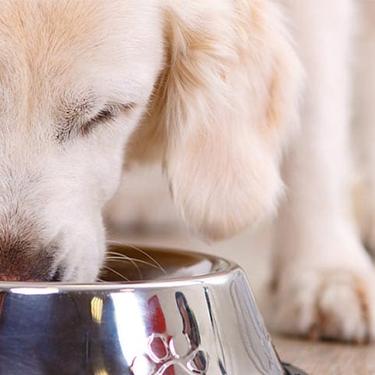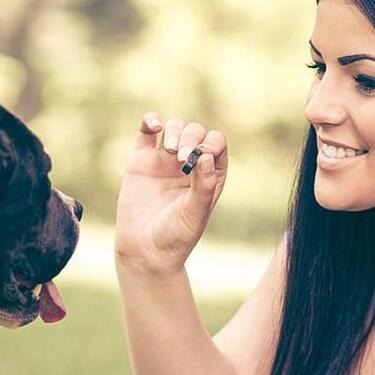
-
Find the right food for your pet
Take this quiz to see which food may be the best for your furry friend.
Find the right food for your pet
Take this quiz to see which food may be the best for your furry friend.
Featured products
 Adult 7+ Perfect Digestion Chicken, Whole Oats & Brown Rice Recipe Dog Food
Adult 7+ Perfect Digestion Chicken, Whole Oats & Brown Rice Recipe Dog FoodScience Diet's breakthrough nutrition supports ultimate digestive well-being & healthy microbiome for dogs age 7+
Shop Now Small & Mini Savory Stew with Chicken & Vegetables Dog Food
Small & Mini Savory Stew with Chicken & Vegetables Dog FoodA delicious complement to the nutrition of Science Diet Small & Mini 7+ dog food
Shop Now Adult Healthy Cuisine Roasted Chicken, Carrots & Spinach Stew Dog Food
Adult Healthy Cuisine Roasted Chicken, Carrots & Spinach Stew Dog FoodDelicious roasted chicken paired with tender vegetables in a succulent stew
Shop NowFeatured products
 Adult 7+ Tender Tuna Dinner Cat Food
Adult 7+ Tender Tuna Dinner Cat FoodWith delicious chunks in a decadent gravy
Shop Now Adult 7+ Senior Vitality Chicken & Vegetable Stew Cat Food
Adult 7+ Senior Vitality Chicken & Vegetable Stew Cat FoodImproves Everyday Ability to Get Up & Go
Shop Now Adult Savory Entrée Can Variety Pack Cat Food
Adult Savory Entrée Can Variety Pack Cat FoodPrecisely balanced nutrition with the delicious taste of savory minced chicken to help fuel the energy needs of cats during the prime of their life
Shop Now -
Dog
- Dog Tips & Articles
-
Health Category
- Weight
- Food & Environmental Sensitivities
- Urinary
- Digestive
- Joint
- Kidney
-
Life Stage
- Puppy Nutrition
- Adult Nutrition
- Senior Nutrition
Cat
- Cat Tips & Articles
-
Health Category
- Weight
- Skin & Food Sensitivities
- Urinary
- Digestive
- Kidney
-
Life Stage
- Kitten Nutrition
- Adult Nutrition
Featured articles
 Do Dogs and Cats have Belly Buttons?
Do Dogs and Cats have Belly Buttons?Learn whether cats & dogs have belly buttons like humans, what the function is, and if there are any health concerns associated with it.
Read More Why Are Dogs and Cats So Cute?
Why Are Dogs and Cats So Cute?If waggy puppy dog tails and furry kitten yawns make you swoon, you're not alone. Why are cats so cute? And, dogs too! Let's find out!
Read More Does My Pet Hate Me?
Does My Pet Hate Me?Learn tips for bonding with your pet if you've ever thought, 'My dog doesn't like me, or 'Why do I have a standoffish cat?'
Read More -


If you refer to your canine companion as your shadow, you're likely the pet parent of a velcro dog. Named after the popular hook-and-loop fastener known as VELCRO® (which is used to join two objects), this type of behavior expressed by a dog toward their human companion is often described as clingy, but oh so loving, too. Whether you want your dog to get closer or ease up a bit, here are some considerations about velcro dogs.
What Is a Velcro Dog?
Dogs are pack animals, which means they prefer to live in a group. Although your pet isn't navigating the wild, their tendency to travel in a pack — close by your side — is reflective of natural instinct, according to the American Kennel Club (AKC). Some level of closeness is completely normal and to be expected from your dog.
However, if a dog is underfoot at every turn, it might be time to take a closer look at daily life. The AKC says how you train and respond to your dog largely influences behaviors. You might actually be encouraging the dog to be so close and velcro-like. For some pet parents, velcro dogs are a win. For others, they could be a concern.
If you're looking to adopt a new dog, a typical velcro dog will approach you easily, show affection quickly and likely follow you around as you meet and greet one another. It does take dogs time to become acclimated to a new pet parent, but if they seem to be well-adjusted from the very start and intrigued by you, you might just have a velcro dog in the making!
For those who are starting to notice velcro behavior from their dogs, the Innovative K9 Academy in Utah says clingy behavior can be a breed-specific trait or learned behavior based on too much positive reinforcement. This may be caused by taking your dog with you everywhere; it may also occur if your pet hasn't had enough socialization with people outside of your bond.
According to The Animal Rescue Site, which fundraises for animal rescues, the following breeds are most likely to become velcro dogs:
- Labrador retrievers
- French bulldogs
- Papillons
- Golden retrievers
- Chihuahuas
- Shetland sheepdogs
- Pugs
- Australian shepherds
- Italian greyhounds
- Doberman pinschers
Puppies have a tendency to be velcro dogs, as well. This is mostly the case because they're young, impressionable and leaning into their natural pack instincts, so they follow you everywhere, according to the AKC. But, as a dog ages and lives a domesticated life, they learn new habits and absorb instruction from you, their pack leader.


Tasty Tips
When Velcro Dogs Are Beneficial Buddies
You love your pet for their unwavering companionship, warmth on a chilly evening and presence around the house. For many, the idea of raising a velcro dog is a goal. It means having a sweet soul ready to accept attention at a moment's notice and a pair of listening ears whenever the desire to chat with an attentive audience strikes.
When a pet is by your side, they have the ability to improve your health, according to the Centers for Disease Control and Prevention (CDC). You might just notice that a velcro dog encourages you to:
- Get outside and walk more often
- Socialize with others at the dog park
- Smile more and feel less stressed
The CDC says pet parents may also experience a decrease in blood pressure, cholesterol levels and feelings of loneliness. So next time your dog rubs up against your leg, share a few words of gratitude for being such a good little buddy.
When Velcro Dogs Pose Safety Risks
On the other hand, you may have a dog who follows you absolutely everywhere, including into the bathroom or behind each step around the kitchen. This type of behavior could become a tripping hazard for you or an injury risk for the pet. Velcro dogs also have a greater chance of experiencing separation anxiety and acting out when left alone. This could mean damage to your home, a kennel or to the pet themselves (via excessive self-licking or chewing).
If the clingy behavior is new and uncommon, give the pet a quick look-over. Is there a burr caught in their paw pad causing pain? Did you forget to fill the water bowl and the dog is asking for a drink? Some clingy behavior is simply an ask for attention. Resolve the need and your pet will go back to their usual behaviors.
If your pet could earn the rating of super-duper-extra-clingy, it's time to evaluate your frequency of positive reinforcement. You may be doting on the pet too much and unknowingly training them to follow you around given that they get a reward at every turn, such as gushing attention, back rubs or tasty treats.
Tips for Training Velcro Dogs
If your pet is too clingy, take note of how you're responding to them throughout the day. If you routinely spoil your dog, that overload of affection can trigger velcro behavior. If every time your pet approaches you, you create feel-good moments, the dog is going to stay by your side 24/7. Why wouldn't they?
The first step to training your velcro dog is to learn why your dog won't leave your side. Then, work to resolve that concern. It's a good idea to loop in your veterinarian to be sure there isn't a physical problem with the pet and ask for tips from their firsthand experience managing behaviors for their patients.
If your pet is distant and you'd like them to be more of a velcro dog, flip the script here. Give them more one-on-one attention. Praise them when they are doing good things, like playing calmly with a toy on their own, relaxing in the approved chair or joining you at a time when you want them close. Let them know you're part of their pack beyond dog walks and backyard playtime.
So, what is a velcro dog? It's a pet who will follow you everywhere, seeking your loving attention. This instinctual behavior can make your dog your most faithful buddy or a bit of a nuisance if the condition is fueled by anxiety. Thankfully, dog obedience lessons can reframe your pet's behavior to become more or less clingy, whichever you personally prefer. Remember: You are the leader of the pack. You are in charge of how the humans and pets in your household interact. Here's to happy days ahead with your dog!


Angela Tague is a pet mom and writer living in the Midwest. When she's not making a mess in the kitchen, exploring nature trails with her dog, or attending a yoga workshop, she's writing full-time for multiple lifestyle and technology brands. You can find her on Twitter and LinkedIn @AngelaTague.
Related products
Related articles

Learn the the dangers of feeding your dog chocolate, which types are most dangerous, and what to do if you discover that they have consumed chocolate.

Learn about choosing the right dog food to help ensure your adult dog will receive the correct balance of nutrition.

Learn how today's wet dog food blends have gotten a face lift, and how you'll provide your dog the nutrition he needs in the form he loves.

Proper nutrition for your pregnant or nursing dog is vital to her and her puppy's health. Learn what you should do provide her with the proper nutrients.

Put your dog on a diet without them knowing
Our low calorie formula helps you control your dog's weight. It's packed with high-quality protein for building lean muscles, and made with purposeful ingredients for a flavorful, nutritious meal. Clinically proven antioxidants, Vitamin C+E, help promote a healthy immune system.
Put your dog on a diet without them knowing
Our low calorie formula helps you control your dog's weight. It's packed with high-quality protein for building lean muscles, and made with purposeful ingredients for a flavorful, nutritious meal. Clinically proven antioxidants, Vitamin C+E, help promote a healthy immune system.

